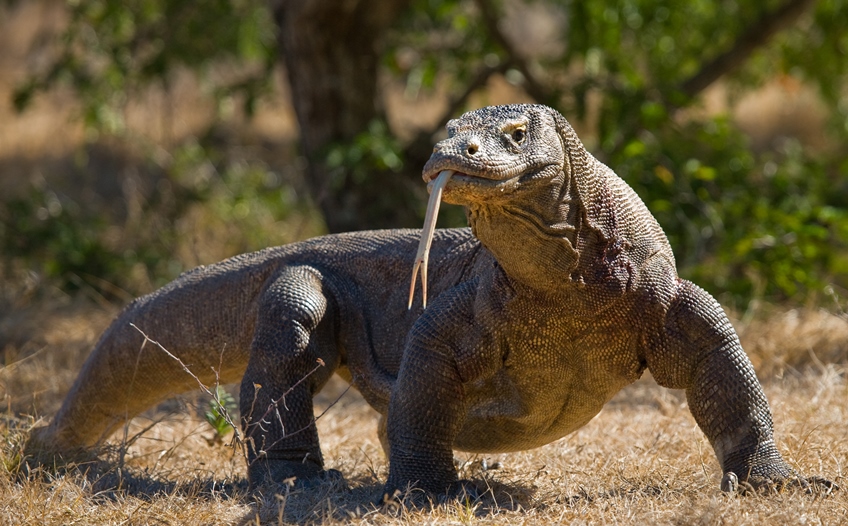The Komodo dragon (Varanus komodoensis), a type of monitor lizard belonging to the reptilian order Squamata, is a tremendously powerful carnivorous predator. The creature is indigenous to a small number of Indonesian islands, including Komodo, and is the largest living lizard on Earth, attaining lengths of 3 m (10 ft). However, the Komodo dragon is not only unique in size. It also possesses high endurance, long-lasting aerobic and cardiopulmonary capacity, and an unusually high rate of energy metabolism for a cold-blooded animal, reaching nearly mammal-like metabolic levels. Now, investigators have mapped the genome of the Komodo dragon and identified numerous genetic sequences that evolved over time and led to critical adaptations in physiology. See also: Adaptation (biology); Energy metabolism; Evolution; Evolution and interrelationships of lizards and snakes; Genetic mapping; Genetics; Genomics; Island biogeography; Metabolism; Reptilia; Squamata

The genome of the Komodo dragon is remarkably different than the genomes of other reptiles (for example, crocodiles, snakes, and turtles). Specifically, genes that favor high mitochondrial function in the Komodo dragon have been adopted through the evolutionary process of positive selection (the process by which new advantageous genetic variants increase in frequency within a population). Mitochondria are specialized organelles that are necessary for cellular respiration and energy production in most eukaryotic cells that use oxygen. The mitochondria of the Komodo dragon show more similarities with the mitochondria of mammals, allowing the Komodo dragon to achieve sustained aerobic activity and high cardiac and muscular output (which are features more characteristic of mammals than of reptiles). In addition, researchers found other genetic sequences encoding high numbers of vomeronasal receptors, which are chemical sensors that detect hormones, pheromones, and other chemical messengers. These chemicals are involved in many aspects of predation, territoriality, mating, and kin recognition. For example, Komodo dragons possess an advanced olfactory system that can detect prey over great distances (up to several kilometers). See also: Cellular respiration; Chemical ecology; Chemical senses; Chemoreception; Gene; Hormone; Mammalia; Mitochondria; Olfaction; Pheromone; Predator-prey interactions; Territoriality
Finally, the insights provided by the mapping of the Komodo dragon's genome might play a role in conservation. According to the International Union for Conservation of Nature (IUCN) Red List of Threatened Species, the Komodo dragon is currently listed as a vulnerable species, with approximately 4000–5000 individuals located in the wild (mostly within the confines of the Komodo National Park in Indonesia). Through a better understanding of the specific adaptations in physiological and metabolic function resulting from evolutionary changes made in the genome of the Komodo dragon, conservationists are provided with more information that could improve the environmental and ecological conditions of this animal. See also: Conservation of species; Endangered species; Physiological ecology (animal)





